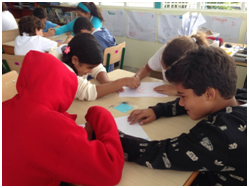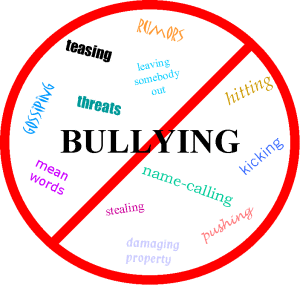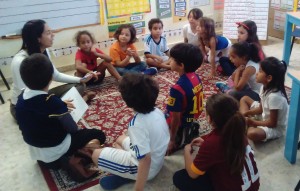Creating Community to Minimize Bullying
In a school, when we make the commitment to minimize bullying, we have to take a number of steps (explained in more detail here), such as:
- teaching kids how to recognize bullying and how to stand up to it
- informing parents of the effective steps they can take when their child is being bullied
- getting professional help for the bully
- teaching the victims how to stand up for themselves
However, anti-bullying isn’t just about teaching kids what bullying is, how to recognize it, and how to stand up against it. It’s also about creating a climate in which students don’t feel the need or the desire to bully one another. In order to do this, we need to develop a sense of community in both the classroom and the school environment. When kids recognize the similarities they share with others, when they see what connects them, they develop empathy and are much less likely to bully each other.
There are many, many ways to build community, but it’s important to make this a priority and to consistently make time for these activities. With more and more emphasis being placed on “meeting standards” and “teaching to the test,” teachers feel pressured to drop these kinds of activities. However, in the long run, community-building saves time, since children learn better when they feel safe.
Class meetings: In elementary, in order to build community, we start in the classroom with class meetings. These can be held on a daily to weekly basis, depending on class needs and age. During class meetings, students sit in a circle where they can all see each other. This is a time for kids to share their feelings and to air out problems in a safe atmosphere. The teacher sets the agenda for the meeting and creates an open, welcoming environment by never using judgmental language. Students are taught to state their concerns in a positive way, using “I” messages, such as “I feel hurt when…..” rather than “you always hurt my feelings by…” See The Morning Meeting Book by Roxann Kriete and Carol Davis for more information on class meetings.

This is the “Two on a Crayon” activity, where students spend the length of an entire song in complete silence, sharing a crayon with a partner without planning in advance, and having the awesome experience of being in sync.
Team-building activities: These are activities in which teams of students work to reach a goal or solve problems together. They’re non-competitive, and they help build community since students must share ideas and work closely together to meet their goal. (for example, tipping a bucket of “toxic waste” into a neutralizing bucket using only a bungee chord, or giving directions to a blindfolded peer as s/he tries to navigate a maze. You can Google “team building activities” to get ideas). Working together, groups develop effective communication and problem-solving skills. Often, after these kinds of activities, we’ll hear comments like “Oh, Jane’s a lot nicer than I thought she was.”
Shared trips:
One of the reasons field trips are so important is that students (and teachers) get to see each other in a different environment. In middle school and high school, taking a class on a weekend trip can be very helpful in developing relationships. It’s important to plan these trips well, including a series of team-building activities and fun, non-competitive games. Alternatively, several grades can go on a team-building trip together. For instance, we recently took our high school (9th – 12th grade) to a beach outside of town. Students were split into seven teams of 12 or 13 students, and each team included students from all grade levels (students were chosen randomly). After an ice breaker that included all seven groups, teams had to perform a series of activities, such as a scavenger hunt, an egg toss relay, solving a math problem, etc. As they completed each activity, they received a letter. At the end of the afternoon the teams came together and tried to form a sentence with all of the letters. The results of this trip were amazing, and we now plan to schedule them regularly – once at the beginning of the year and once in the second semester.
Upper grades working with lower grades: Whenever older students work with younger students, important bonds are formed. For instance, we’ve had the 5th grade read stories to 1st graders, 10th grade help 3rd grade students create costumes for our independence day production, and 9th grade students teach 5th graders about DNA. But one of the most important things we’ve tried is having the 7th grade students teach our 1st grade students about bullying.
Our 7th graders were allowed to prepare their lesson in any way they wanted. One class chose to do puppet shows, while another acted out a series of bullying scenarios. Then both groups created centers where 1st graders could reflect on what they’d learned or delve deeper into the subject. In preparing their lessons and sharing their ideas, the 7th graders reflected deeply on bullying, while the 1st graders were thrilled to spend time with the “older kids” they admire so much and were extremely receptive to their ideas.
Yes, these activities take time away from the academic curriculum, but they make a world of difference in the atmosphere of a school. And, after all, shouldn’t we feel that teaching students to be kind and empathetic is equally as important as teaching them chemistry and algebra?
P.S. Thank you for the pictures Raymi, Val, and Ylonka!





Leave a comment